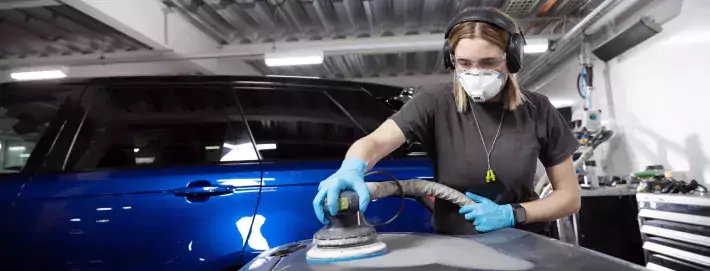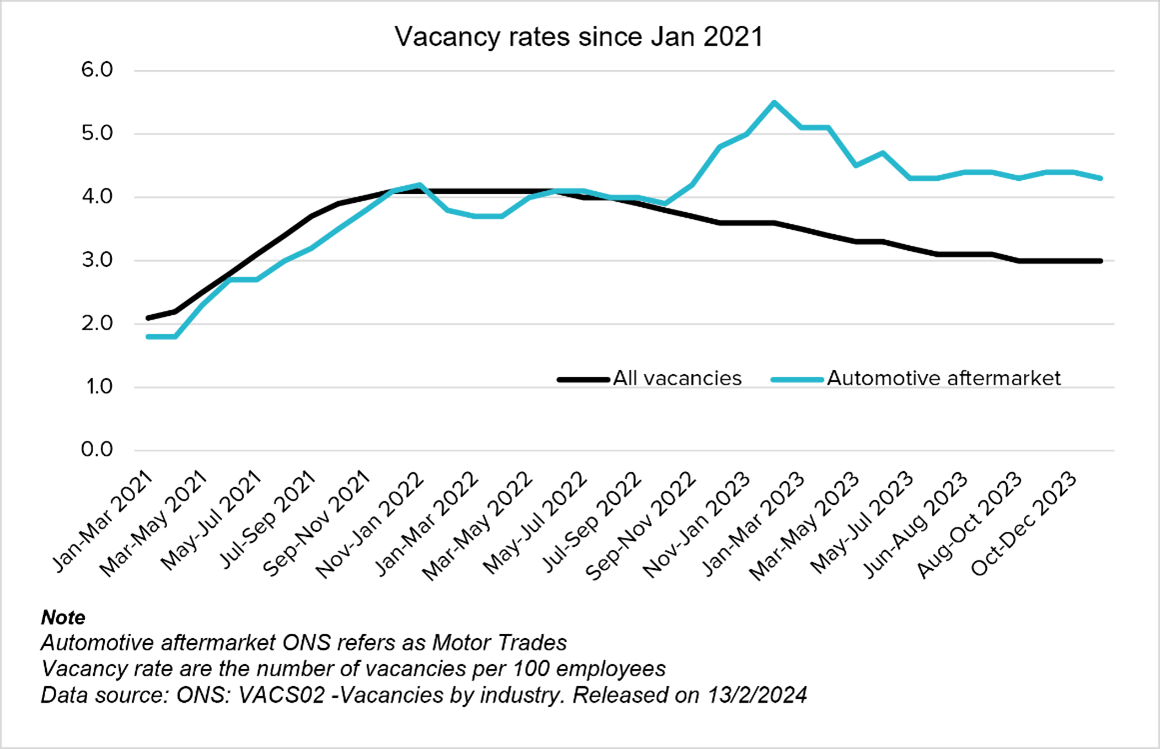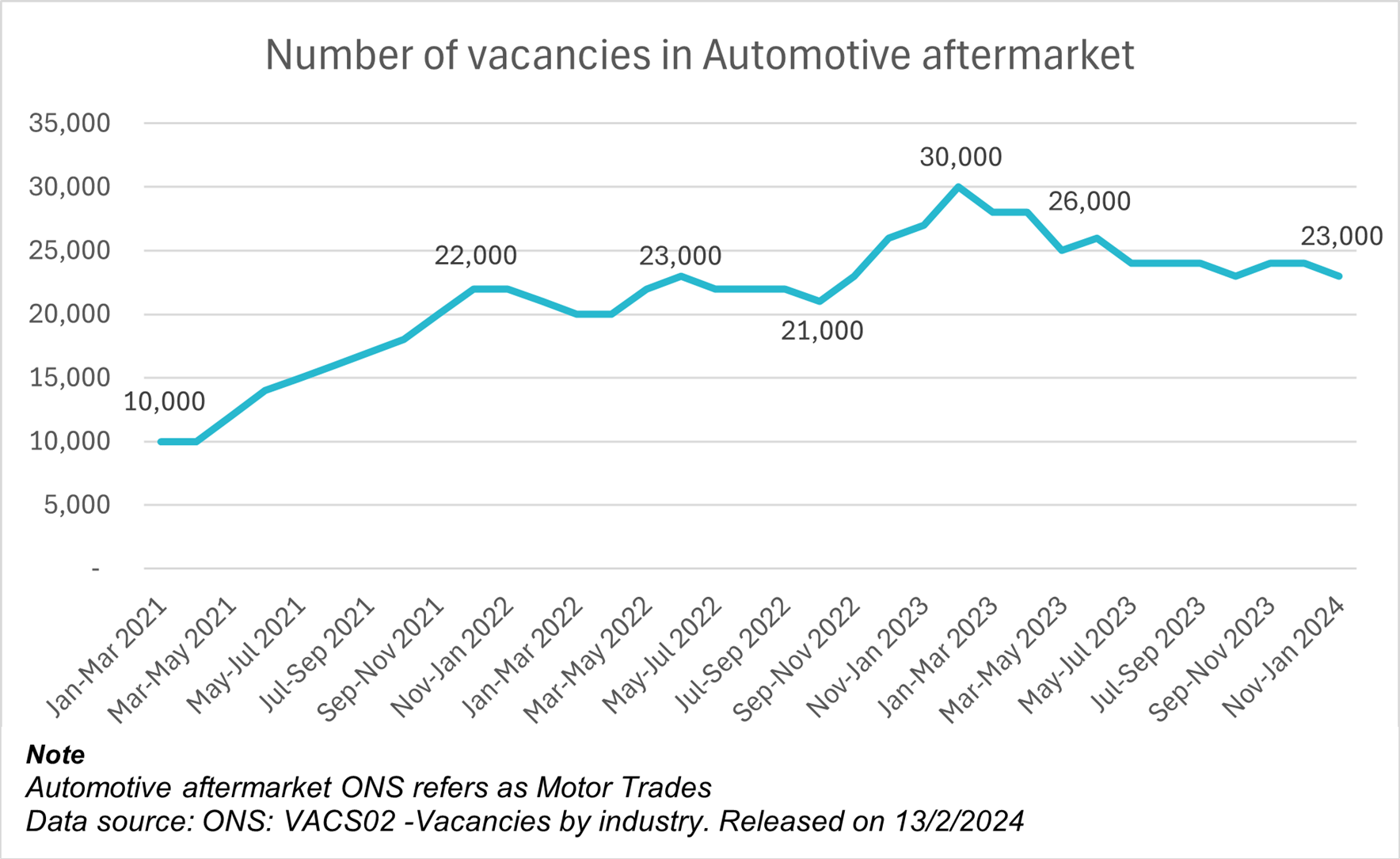Vacancies remain stubbornly high in Automotive Aftermarket at 23,000

Job postings highlight growing need for technicians, mechanics and electricians able to work safely on EVs
The latest report from the Institute of the Motor Industry (IMI) shows that the automotive aftermarket continues to face multiple challenges across the employment landscape. Post-pandemic recovery patterns, technological advances and changing customer behaviour are all contributing to vacancy rates bucking the nationwide trend and remaining high at a rate of 4.3 vacancies for every 100 employees. The rate is 43% above the average for all sectors.


As the IMI’s UK Automotive Vacancy Overview report confirms, only the hospitality sector has a higher vacancy rate and that sector is seeing significant improvements in recruitment which means its vacancy rates are likely to fall below that of automotive within the next few months.
Steve Nash, CEO at the IMI commented: “The gap between vacancies in automotive and all other UK sectors highlights the multitude of unique and ongoing challenges we face. With our sector currently facing around 23,000 vacancies, it’s critical that everything is done to encourage more job seekers to consider a role in automotive.
“The IMI’s ‘There’s More to Motor’ campaign is already spreading the word about the wide range of opportunities for school leavers, apprentices and career changers. Since launching last Summer, we have already reached millions of individuals, many of whom have never held an automotive role. However, the reality is that, even with such a high level of success, it takes time for that to translate into reducing the vacancy rate.”
The IMI believes the shift in automotive technology – EVs and ADAS - has also intensified the challenges faced by the sector, with 52% of job postings in January 2024 seeking Vehicle Technicians, Mechanics, and Electricians.
Emma Carrigy, Research Manager at the IMI added: “The correlation between trends in vacancy rates and job postings in the sector illustrates a complex scenario, defined by technological evolution, shifting consumer preferences, and the ongoing challenge of bridging the skills gap. Automotive is in transition, seeking to address the skills gap and adapt to future mobility needs simultaneously, to maintain a successful and thriving workforce and prosper in this new landscape.”





